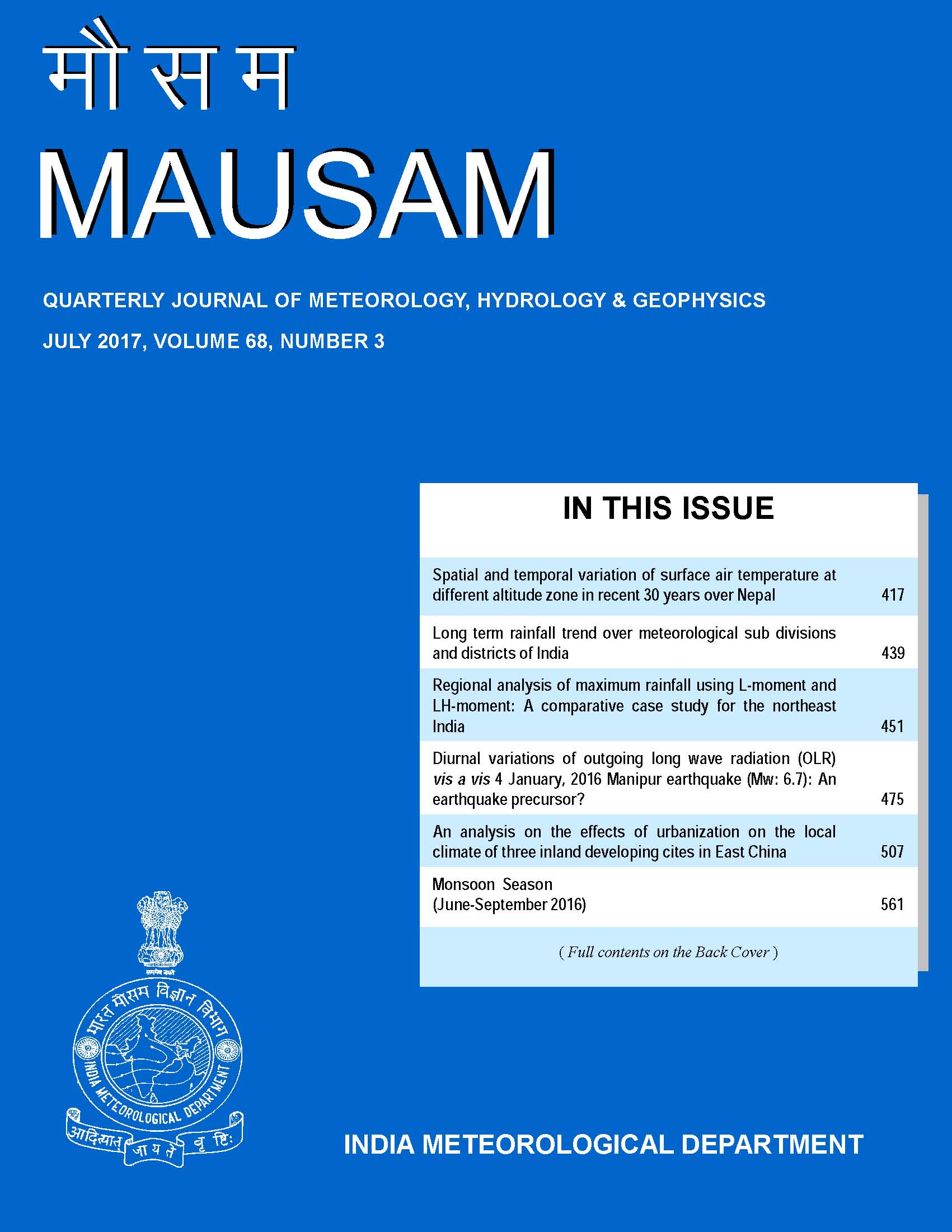Role of Hamiltonian energy in thunderstorms
DOI:
https://doi.org/10.54302/mausam.v68i3.706Abstract
In the present study, we propose a hypothesis that “Hamiltonian energy of thunder storm is contributing towards the energy that overcomes convective inhibition energy to lift the parcel to the level of free convection and releases convective available potential energy in the environment”. We attempt to substantiate the hypothesis. We have applied Hamiltonian structure to a thundercloud which has occurred vertically above the meteorological observatory station. Further, a total of 62 cases of thunderstorms are selected for both stations Palam and Dumdum. Hamiltonian energy is computed and investigated the cases having significant large convective inhibition energy as compared to that of convective available potential energy. We attempt to show that Hamiltonian is the energy that overcomes convective inhibition energy to lift the parcel to the level of free convection and plays a major role in thunderstorms for giving rain.
Results reveal that Hamiltonian energy is seen to be maximum at the surface and contributes to both convective inhibition energy and convective available potential energy. At the lower troposphere, it overcomes the convective inhibition energy and provides necessary trigger for air mass to move from surface to the level of free convection. While in the upper troposphere, it is contributing to the convective available potential energy such that the part of potential energy converted into kinetic energy & warm and moist air mass (unstable) acceleration is enhanced by pressure energy.
Further, in all the six special cases stability indices had indicated possibility of thunderstorm. In addition, synoptic conditions were also favorable for the same.
Downloads
Published
How to Cite
Issue
Section
License
Copyright (c) 2021 MAUSAM

This work is licensed under a Creative Commons Attribution-NonCommercial 4.0 International License.
All articles published by MAUSAM are licensed under the Creative Commons Attribution 4.0 International License. This permits anyone.
Anyone is free:
- To Share - to copy, distribute and transmit the work
- To Remix - to adapt the work.
Under the following conditions:
- Share - copy and redistribute the material in any medium or format
- Adapt - remix, transform, and build upon the material for any purpose, even
commercially.



